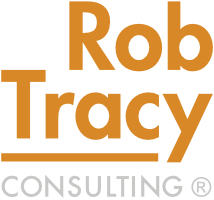2020 is in the books, and the deployment of a vaccine has begun. We have spent much of the last year rolling with the punches. Some organizations faced precipitous drops in volume, while others struggled to keep up with demand. We were reactionary, responding to the changes and challenges as they hit us, one wave after another.
It’s now 2021, and there is a light at the end of the pandemic tunnel. Some things may return to how they were before March 2020, but other shifts have been rapid and permanent.
Now is an excellent time to dust off your strategic plan and tweak it to face our new landscape’s realities. Here are nine topics to spur your thinking:
- Supply chain resilience
Many organizations were hurt last year due to fragile supply chains that were overly concentrated. Do your customers plan to build a more resilient or flexible supply chain? How will this impact you, and your supply chain? - Market shifts
Did your market see a dramatic shift in 2020? How did 2020 change consumer preferences? What does it mean to your business? - Remote work
Work-from-anywhere leaped forward in 2020 out of necessity, and I don’t think that toothpaste is going back in the tube. How does this impact the future of your workspace, culture, and workplace policies? - Sales and marketing approach
We’ve gone a year without trade shows and in-person sales visits. What does the future of sales and marketing look like for your organization? Should you switch away from a geographically structured sales force? Have trade shows become passé while content-based marketing approaches become more relevant and essential? - Balance sheet strength
How does your balance sheet look after 2020? Is repair work needed? How does this impact your plans for capital investment and growth? - Industry 4.0
Honestly, I haven’t paid much attention to Industry 4.0 because I have perceived it as both academic and only relevant to the mega-corps. I have started to shift my view, and I think it’s worth understanding and building into a long-range plan. Companies like Raven.ai are making advanced intelligence technologies approachable and affordable for smaller manufacturers. - Acquisitions
Were acquisitions part of your plan before 2020? With all that has occurred, how should they fit into your future? Acquisitions tend to be big bets that can take years to execute and even longer to unwind if things don’t pan out well. Now is a great time to reflect on your acquisition strategy to determine if a new direction is appropriate. - Ownership transition
Most small and mid-size manufacturers have an end-game in mind. It may involve transitioning the business to the next generation, selling to a strategic buyer or private equity group, or even an ESOP. Has 2020 shifted your thinking or timetable? You’ll want to start preparing years in advance for an ownership transition. - Social norms
The pandemic took the headlines in 2020, but social unrest was close behind. Are social issues shaping your company and strategy? Should they? This is a difficult topic, and I think today’s hypersensitivity and cancel-culture has done more to quash conversation than to enable it. However, your employees will want to know where you stand relative to social issues.
You may find that your strategic plan is in perfect working order, and the events of the last year were nothing more than nauseating turbulence. On the other hand, you may find that there are elements of the strategic plan that require substantial rethinking. There is no time better than the present to do the hard work to chart a better course.
About the author: Rob is a consultant that focuses on helping leaders of small and mid-size manufacturers to achieve their goals. He specializes in custom-tailored operating systems and strategic consulting. He can be reached at 651-398-9280, LinkedIn or rob@robtracy.net
